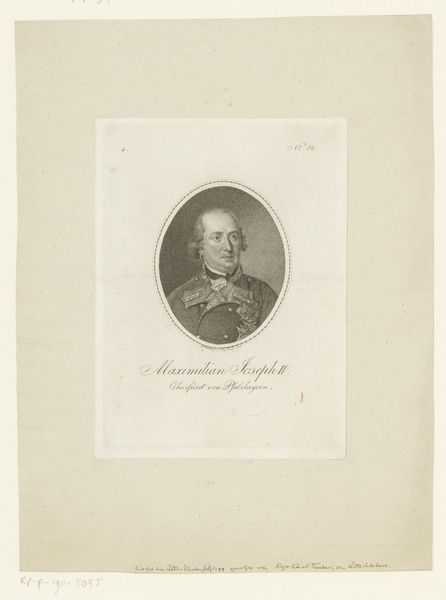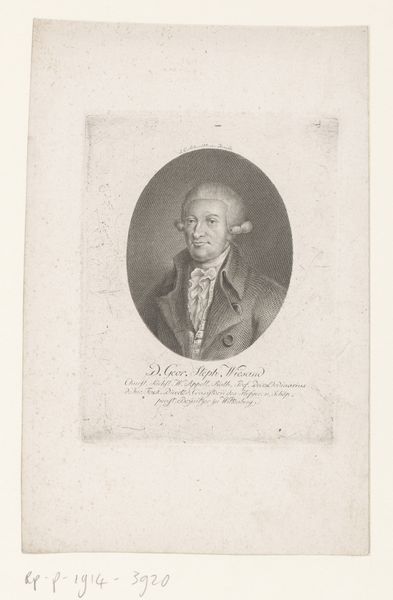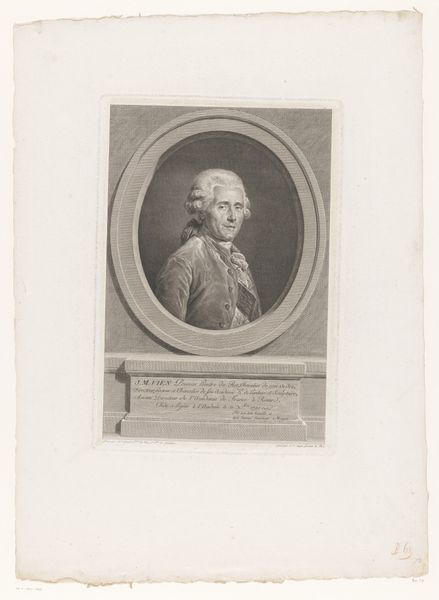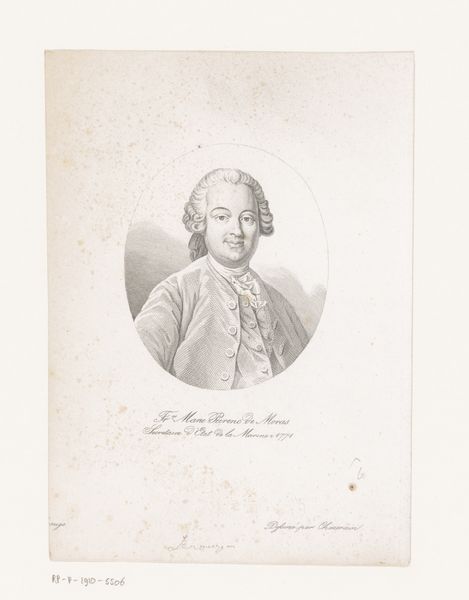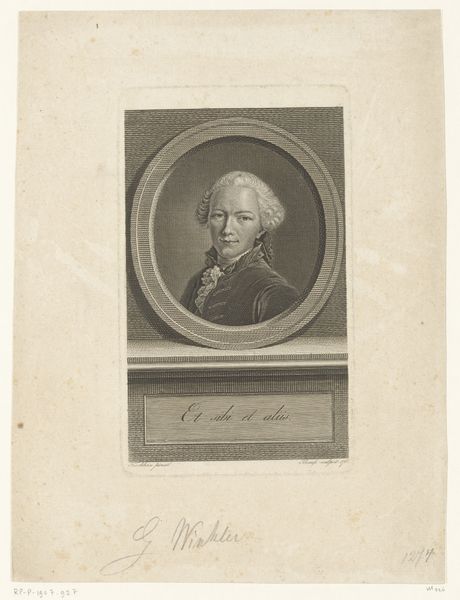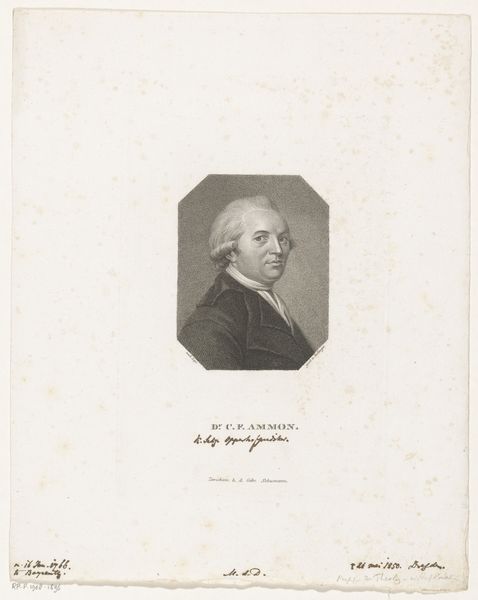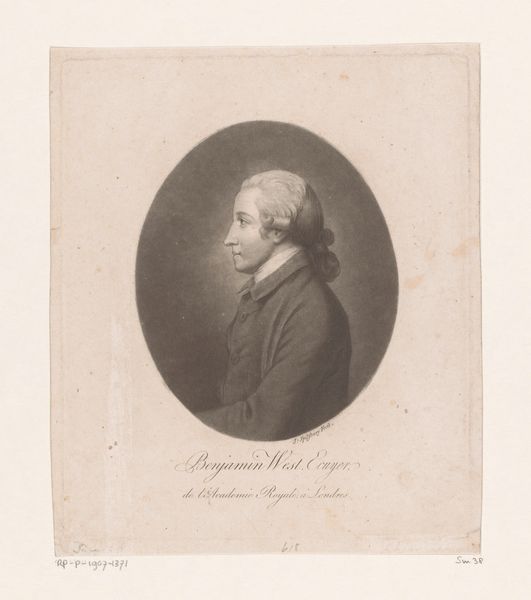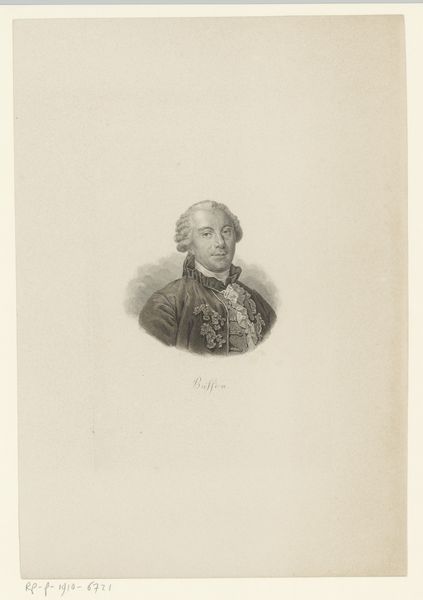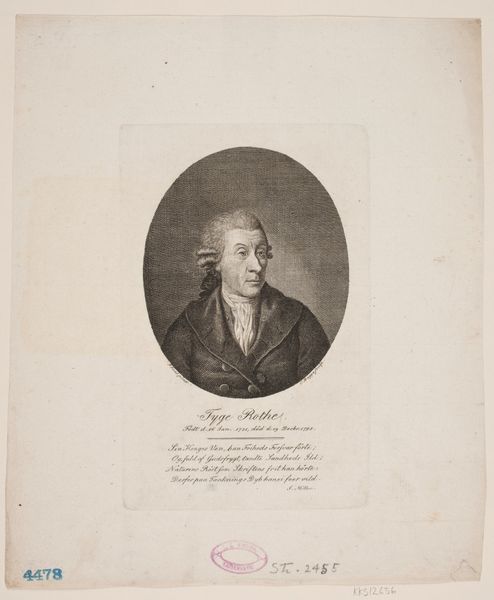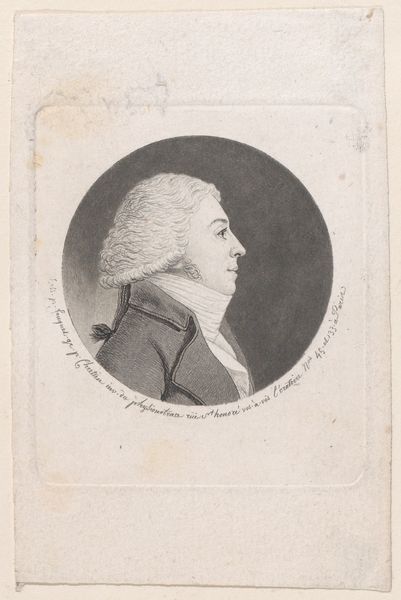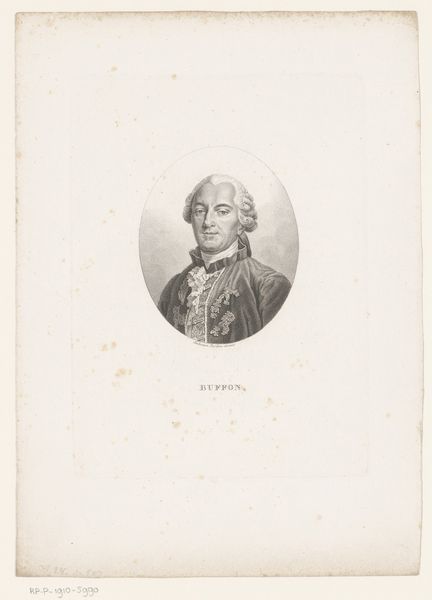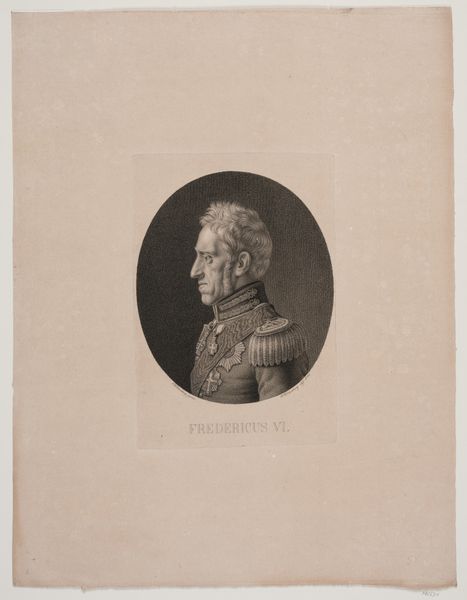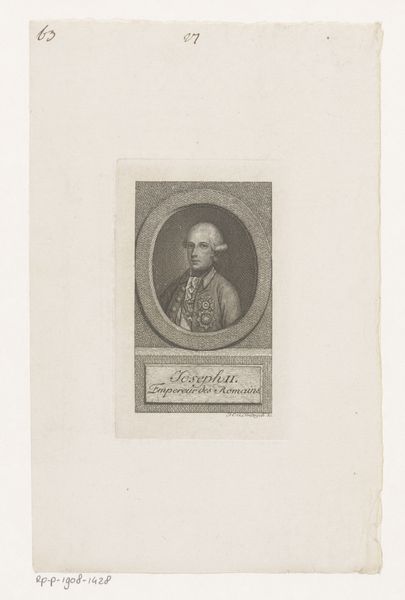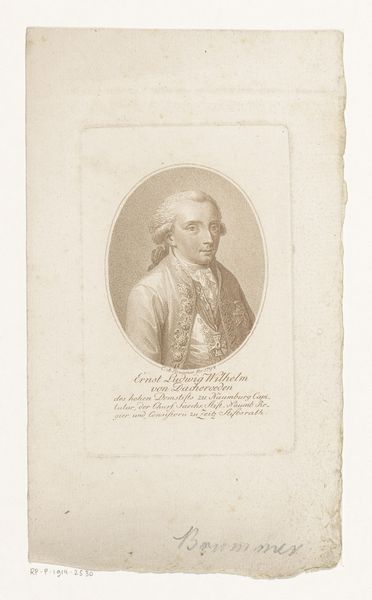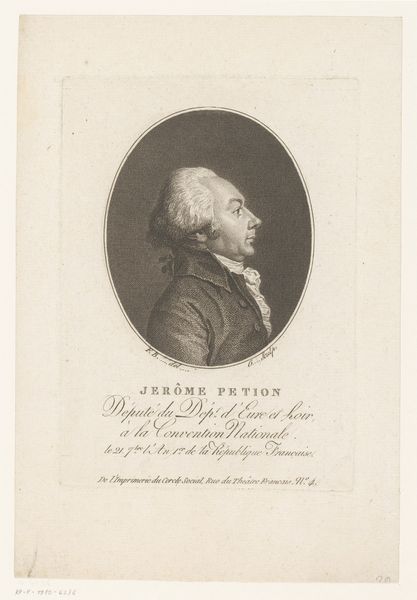
print, engraving
#
portrait
#
neoclacissism
# print
#
old engraving style
#
historical photography
#
line
#
history-painting
#
engraving
Dimensions: height 230 mm, width 172 mm
Copyright: Rijks Museum: Open Domain
Curator: Standing before us, we have "Portret van Jean Victor Moreau", an engraving created sometime between 1793 and 1824, by Friedrich Wilhelm Nettling. Editor: Striking. Immediately, I’m drawn to the subject's stern gaze, but there is also an underlying vulnerability, captured so delicately through this monochromatic, oval frame. It feels restrained. Curator: Indeed, it's fascinating how Nettling uses the print medium to navigate complex issues of representation during the height of the French Revolution, a period steeped in the performance of identity. Editor: Do you think that restraint reflects a particular ideal? There’s such formal control, that's so at odds with the chaos of the era. Curator: The visual language certainly speaks of Neoclassicism: order and control in turbulent times, idealizing Republican virtues by referencing the visual legacy of the ancient republics. Consider the detail in the coat, contrasting a restrained palette against ornamental frogging. Editor: I can't help feeling there’s something a bit unsettling beneath that. The sharp, unforgiving line work lends Moreau an almost ghostly quality. It seems like an idealized representation of someone perhaps already haunted by their past, their actions... I wonder about the politics. Curator: Precisely. Moreau, a celebrated general who later fell from Napoleon's favor, becomes a contested figure. And engravings like these were key to shaping public opinion, contributing to his later image as a reluctant revolutionary hero after being accused of treason. Editor: It makes me reflect on the role art plays, consciously or unconsciously, in forging a mythology around its subjects. Perhaps Nettling understood he was capturing more than just a man, but a figure caught between historical forces. Curator: A figure very much imprinted on the public consciousness of the time, a process facilitated in part by images such as these, circulated for political reasons, for a nation wanting and needing its heroes. Editor: And that awareness makes this much more than just a portrait – it is history etched into paper.
Comments
No comments
Be the first to comment and join the conversation on the ultimate creative platform.
